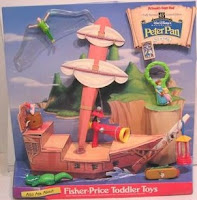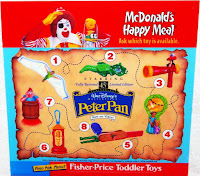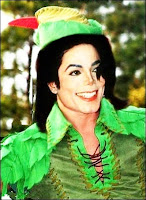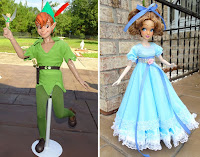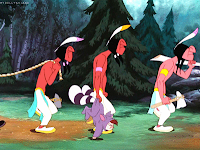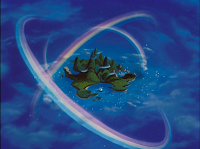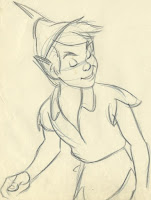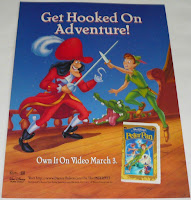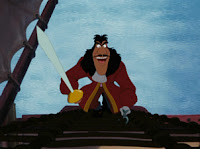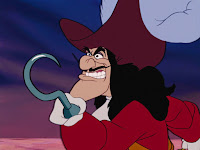Hi folks! Welcome to my My Own Personal Nerdy Disney and Animation Scrutinizing Analysis blog. A blog where I'm analyzing several Disney films, Disney or Animation in general! These entries are just meant to be my analyses. Not reviews or statements. Just fun analyses! Though I'll make some personal remarks now and then, the content of these entries are meant to be depicted objectively. They're made for entertainment purpose only and the pictures/clips are copyright Disney or other companies.
Make sure to leave a comment if you like this site! And if there's something you think could be improved, please let me know. But in a constructive way, please. And just a note; I'm not a Native English writer, so my incorrect grammar may be notable.
And finally; If you haven't seen the films, beware of spoilers! And the funny lines aren't meant to be nothing than funny. So I hope you won't find them offensive. If so, I apologize

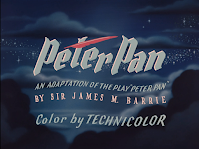 James Barrie's Peter Pan has been ingrained in our culture since it's release. And has seen various adaptations through
various forms. Those tales originated from trips with a family Barrrie
knew. Where he was hiding treasures for the youngsters, two of them
named Peter and Michael. And the name Pan wasn't just a coincidence, since he's was named after the God of Mischief.
James Barrie's Peter Pan has been ingrained in our culture since it's release. And has seen various adaptations through
various forms. Those tales originated from trips with a family Barrrie
knew. Where he was hiding treasures for the youngsters, two of them
named Peter and Michael. And the name Pan wasn't just a coincidence, since he's was named after the God of Mischief.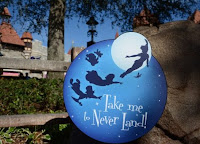
 Peter Pan had his first appearance in the 1902 novel The Little White Bird. Before taking place on stage two years later, a medium that the story has been known for. And it quickly became a holiday stage play! While Barrie continued writing adult material, he was mostly known for Pan. It's been adapted both in Television and Cinema afterwards and again and again.
Peter Pan had his first appearance in the 1902 novel The Little White Bird. Before taking place on stage two years later, a medium that the story has been known for. And it quickly became a holiday stage play! While Barrie continued writing adult material, he was mostly known for Pan. It's been adapted both in Television and Cinema afterwards and again and again. 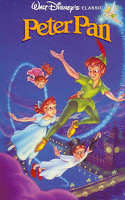
 The reason for why Peter Pan has seen so manyiterations may be it's intriguing premise and that it yields promise. Barrie even wrote Pan
as a screenplay for Paramount Pictures 1924 adaptation as well, which
they eventually rejected (he had his own hesitations about the movie
medium. But was allowed to decide Peter's actress himself, but really
was dissatisfied with Paramount's 1924 version of the story).
The reason for why Peter Pan has seen so manyiterations may be it's intriguing premise and that it yields promise. Barrie even wrote Pan
as a screenplay for Paramount Pictures 1924 adaptation as well, which
they eventually rejected (he had his own hesitations about the movie
medium. But was allowed to decide Peter's actress himself, but really
was dissatisfied with Paramount's 1924 version of the story).No matter how many adaptations Peter Pan has seen, this entry will of course center about Walt Disney's version (duuh). Walt acquired the rights to Peter Pan
in 1939, while he began envisioning it four years priorly (Paramount
Pictures had the original rights to it, which Disney had to sell them
to). While it's rumored to originally follow the schedule as a
follower to Snow White and the Seven Dwarfs, it ended up
being postponed through both the 1930`s and 40`s (mostly due to World
War II, while there were plans to make it prior to the war).
Walt`s  Peter Pan cost $ 4 million dollars to make. Which was at the time the most expensive feature from the studio, using 500,000 separate drawings. Pan was also Walt's second favorite childhood story after Snow White (so the following wasn't just mere coincidence). Walt
saw the stage adaptation as a child and a silent film. And even starred
as Peter Pan himself in a school-play once, which he fell in front of
the audience when Roy lost the rope that was holding him!
Peter Pan cost $ 4 million dollars to make. Which was at the time the most expensive feature from the studio, using 500,000 separate drawings. Pan was also Walt's second favorite childhood story after Snow White (so the following wasn't just mere coincidence). Walt
saw the stage adaptation as a child and a silent film. And even starred
as Peter Pan himself in a school-play once, which he fell in front of
the audience when Roy lost the rope that was holding him!
 Peter Pan cost $ 4 million dollars to make. Which was at the time the most expensive feature from the studio, using 500,000 separate drawings. Pan was also Walt's second favorite childhood story after Snow White (so the following wasn't just mere coincidence). Walt
saw the stage adaptation as a child and a silent film. And even starred
as Peter Pan himself in a school-play once, which he fell in front of
the audience when Roy lost the rope that was holding him!
Peter Pan cost $ 4 million dollars to make. Which was at the time the most expensive feature from the studio, using 500,000 separate drawings. Pan was also Walt's second favorite childhood story after Snow White (so the following wasn't just mere coincidence). Walt
saw the stage adaptation as a child and a silent film. And even starred
as Peter Pan himself in a school-play once, which he fell in front of
the audience when Roy lost the rope that was holding him! Peter Pan`s Message and Being Ideal For Animation
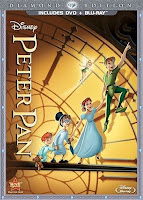
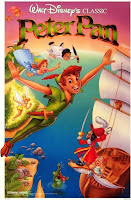 My original intention about my blog was to scrutinize the pictures and themes that I felt where
worth to ponder about. However, I've learned to expand my horizons and
written more entries that I ever thought I would write about. But
also analyzed certain aspects of Disney that I never thought about
analyzing in the first place! However, my main reason to analyze Peter Pan
is for it's conscious childhood vs. adulthood premise, which the
original story also relies on. While coming of age is a recurrent theme
in Disney film (and surprisingly enough not just literally, but
subconsciously), Peter Pan is probably the only film to date
which deliberately shows the fantasy aspect of child- vs. adulthood
overtly (yet ironically, the first screenings of Barrie's plays were
only for adults).
My original intention about my blog was to scrutinize the pictures and themes that I felt where
worth to ponder about. However, I've learned to expand my horizons and
written more entries that I ever thought I would write about. But
also analyzed certain aspects of Disney that I never thought about
analyzing in the first place! However, my main reason to analyze Peter Pan
is for it's conscious childhood vs. adulthood premise, which the
original story also relies on. While coming of age is a recurrent theme
in Disney film (and surprisingly enough not just literally, but
subconsciously), Peter Pan is probably the only film to date
which deliberately shows the fantasy aspect of child- vs. adulthood
overtly (yet ironically, the first screenings of Barrie's plays were
only for adults).  It
was also Michael Jackson's favorite movie (since he adapted the Peter
Pan mantra perhaps too literally). Wendy's voice actress, Kathryn
Beaumount (who was cast to please both American and British ears and
should neither sound like too much of each of them), said that she
noticed different things about the movie watching it again as an adult
(who quit acting and became a teacher afterwards).
It
was also Michael Jackson's favorite movie (since he adapted the Peter
Pan mantra perhaps too literally). Wendy's voice actress, Kathryn
Beaumount (who was cast to please both American and British ears and
should neither sound like too much of each of them), said that she
noticed different things about the movie watching it again as an adult
(who quit acting and became a teacher afterwards).
It's a hackneyed cliche to say that animation is a perfect medium to bring certain stories to life. But it's definitively true for Peter Pan's case. Animation was certainly the medium
to make Peter both fly and float (a challenge for animators Milt Kahl
and Eric Larsson, yet it's rumored that Peter would originally have
wings). And
humanizing and characterizing Tinker Bell (which some purists didn't
like) and all the other fantasy elements (while remarkably enough, the
animals on this movie remains naturalistic and "mute").
 Marc Davis said that Peter Pan had a magic of it's own. Animators as Norm
Ferguson and Bill Tytla were cast to this movie by Walt. One
problem with the story, though, is that it had too much material for the
creators. It was the last animated feature by Walt to be distributed by
RKO, before founding his own company Buena Vista (who took over it's
distribution afterwards). And it was the last film to have a fade-out
prior to it's "The End" title. Walt even attended the Mexican premiere
of the film!
Marc Davis said that Peter Pan had a magic of it's own. Animators as Norm
Ferguson and Bill Tytla were cast to this movie by Walt. One
problem with the story, though, is that it had too much material for the
creators. It was the last animated feature by Walt to be distributed by
RKO, before founding his own company Buena Vista (who took over it's
distribution afterwards). And it was the last film to have a fade-out
prior to it's "The End" title. Walt even attended the Mexican premiere
of the film!Peter Pan`s Gender Demographic
 |
| It's too crowded for Jack Sparrow :) |
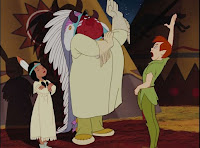 |
| At least it's not Heil Hitler :) |
Character Arc`s
 But perhaps the most satisfying thing with Peter Pan among Walt's films, is how it depicts character
arcs more overtly and more satisfyingly! Several of the characters goes
through arcs. Which is certainly true in Mr. Darling's case. The film sets up his hate for Peter Pan quite nicely, who in true Peter Pan tradition is played by the same actor who also plays Captain Hook (radio actor Hans Conried, who would later on be in 1977's The Hobbit and Horton Hears a Who. And also did other work for Disney, as The Magic Mirror. Conried befriended Walt and his recording for Peter Pan's soundtrack took two years to record). And Mr. Darlings` arc is understated, yet very satisfying.
But perhaps the most satisfying thing with Peter Pan among Walt's films, is how it depicts character
arcs more overtly and more satisfyingly! Several of the characters goes
through arcs. Which is certainly true in Mr. Darling's case. The film sets up his hate for Peter Pan quite nicely, who in true Peter Pan tradition is played by the same actor who also plays Captain Hook (radio actor Hans Conried, who would later on be in 1977's The Hobbit and Horton Hears a Who. And also did other work for Disney, as The Magic Mirror. Conried befriended Walt and his recording for Peter Pan's soundtrack took two years to record). And Mr. Darlings` arc is understated, yet very satisfying.  But regardless of how Walt films shared several protagonists, Peter Pan truly makes it's secondary
character, Wendy, the most well rounded and developed of the
characters. The film centers mostly about her arc and growth (and
Beaumount was chosen for her graceful and feminine voice).
But regardless of how Walt films shared several protagonists, Peter Pan truly makes it's secondary
character, Wendy, the most well rounded and developed of the
characters. The film centers mostly about her arc and growth (and
Beaumount was chosen for her graceful and feminine voice). 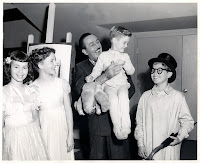
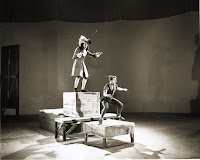 Wendy
(who Don Hahn was in love with, alongside with Tinker Bell) doesn't
initially want to grow up. But learns the necessity of being an
semi-adult in Never Land, where she takes somewhat a part of a surrogate
mom (and unfortunately goes through an awful lot of abuse in Never Land). And while it's would be tempting to ponder about why Peter and Wendy never becomes an actual couple (despite the non-subtle signs of Wendy's crush and admiration for Peter), they weren't a couple in the original story either (while Wendy was originally going to take a picture book of Peter Pan with her to Never Land in Disney's version).
Wendy
(who Don Hahn was in love with, alongside with Tinker Bell) doesn't
initially want to grow up. But learns the necessity of being an
semi-adult in Never Land, where she takes somewhat a part of a surrogate
mom (and unfortunately goes through an awful lot of abuse in Never Land). And while it's would be tempting to ponder about why Peter and Wendy never becomes an actual couple (despite the non-subtle signs of Wendy's crush and admiration for Peter), they weren't a couple in the original story either (while Wendy was originally going to take a picture book of Peter Pan with her to Never Land in Disney's version).Peter Pan Himself
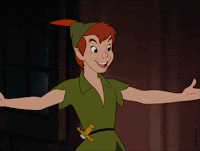 |
| My purpose is to freak you out with my repeating gesture :) |
 As for our titular hero himself (a protagonist who doesn't even appear at the very end), he's mostly known for his childlike personality. But also for being
a ruthless brat at times. Compared to Walt's earlier child leads, who
were innocent, sweet and endearing, Peter Pan is allowed to be a
mischievous, cocky. narcissistic and conceited.
As for our titular hero himself (a protagonist who doesn't even appear at the very end), he's mostly known for his childlike personality. But also for being
a ruthless brat at times. Compared to Walt's earlier child leads, who
were innocent, sweet and endearing, Peter Pan is allowed to be a
mischievous, cocky. narcissistic and conceited.
At least Disney's version was the first time where Peter himself was played by an actual male (Song of the South's Bobby Driscoll's sixth movie), as opposed to what tradition had made earlier
(Walt was considering to give a woman the part, since he was approached
by Jean Arthur). Bobby couldn't do an English accent, which is why his
American one is prominent. And he's obviously being a teenager in
Disney's take (while in some dubbings are given a kid voice).
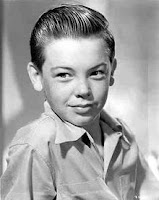
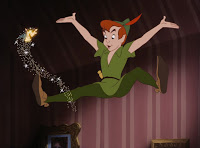 |
| I just did this for one second :) |
At
the end, he takes Wendy and her brothers back to London, despite how
the film never dwells on Peter's own realization of the perks of the
adult qualities. Had the movie been made today, it would've
most likely taken more consideration to Peter's inner turmoil about
this. And while Disney`s always faced scrutiny for their Disneyfication,
some purists actually liked Disney's portrayal of Peter. Believe it or
not.
Tinker Bell

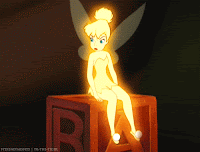 |
| I'm pissed cause Taylor Swift stole the term from me :) |
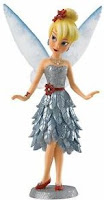 Tinker Bell was envisioned to be just as childlike as Peter (and Walt impersonated her on the story meetings). But the story crew had their hesitations about her appeal due to her curves and tenacious personality. Kerry
did have oversized props to help her with the acting. While she was
going to shoot live action footage for the flying, the crew realized
that Tink flew differently than Peter. Kerry worked on the film for
about nine months and was also urged to show her legs (as how non-PC it
sounds, they asked her in a hesitating, but polite way) and took her
bathing suit as a reference.
Tinker Bell was envisioned to be just as childlike as Peter (and Walt impersonated her on the story meetings). But the story crew had their hesitations about her appeal due to her curves and tenacious personality. Kerry
did have oversized props to help her with the acting. While she was
going to shoot live action footage for the flying, the crew realized
that Tink flew differently than Peter. Kerry worked on the film for
about nine months and was also urged to show her legs (as how non-PC it
sounds, they asked her in a hesitating, but polite way) and took her
bathing suit as a reference.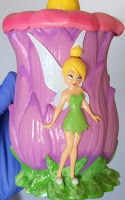
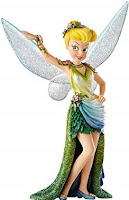 Her pixie dust was also a challenge to bring to life. Since each tiny dot was quite inked. But giving color
to her wings was a daunting task, since they were given brush onto the
reverse side of the cell with a transparency solution. And it was
eventually cooled down, so it could be thinned. The ink department had
to work fast, since it had to be smooth. This
transparent solution was delicate and hard to put on. It needed to
spread very even and very thin, or it could puddle and be dark in spots.
And it always had to be refrigerated or it could smell bad, haha!
Her pixie dust was also a challenge to bring to life. Since each tiny dot was quite inked. But giving color
to her wings was a daunting task, since they were given brush onto the
reverse side of the cell with a transparency solution. And it was
eventually cooled down, so it could be thinned. The ink department had
to work fast, since it had to be smooth. This
transparent solution was delicate and hard to put on. It needed to
spread very even and very thin, or it could puddle and be dark in spots.
And it always had to be refrigerated or it could smell bad, haha!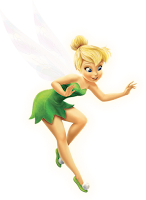
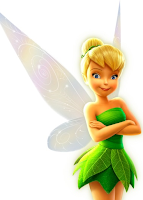 Her bell sounds were partly made from aluminum, made
by Marc Davis, who animated her (inspired from the designs of a story
guy named Jack Miller). Davis enjoyed working on the character, yet he
never did the flying sequences. But the sound was also made by sound
effect man Jimmy MacDonald, who built her bell sounds pitch by pitch.
And her basing of Marilyn Monroe is of course non-true, since it was a
comment taken from proportions (despite how Margaret Kerry, funny
enough, actually worked With Monroe).
Her bell sounds were partly made from aluminum, made
by Marc Davis, who animated her (inspired from the designs of a story
guy named Jack Miller). Davis enjoyed working on the character, yet he
never did the flying sequences. But the sound was also made by sound
effect man Jimmy MacDonald, who built her bell sounds pitch by pitch.
And her basing of Marilyn Monroe is of course non-true, since it was a
comment taken from proportions (despite how Margaret Kerry, funny
enough, actually worked With Monroe). 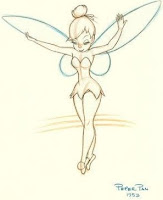
 Since Tinker Bell was just a spot in the original play, animation was truly an advantage to bring the character to real life. Yet she
was also a very expensive character for the crew to work on. But of
course another departure is how the audiences at the theaters were
urged to clap for her to come alive (something that couldn't be done in
movie, while the crew actually tried). The story
surrounds on her hate for Wendy and how she becomes neglected by Pan
for her (let's be glad that she never saw how Tiger Lily flirted with
Pan). And yeah, purists, Tinker Bell was actually willing to kill Wendy.
Deliberately (*shrugs*). Should we really try to sweep that issue under the rug? Of course not!
Since Tinker Bell was just a spot in the original play, animation was truly an advantage to bring the character to real life. Yet she
was also a very expensive character for the crew to work on. But of
course another departure is how the audiences at the theaters were
urged to clap for her to come alive (something that couldn't be done in
movie, while the crew actually tried). The story
surrounds on her hate for Wendy and how she becomes neglected by Pan
for her (let's be glad that she never saw how Tiger Lily flirted with
Pan). And yeah, purists, Tinker Bell was actually willing to kill Wendy.
Deliberately (*shrugs*). Should we really try to sweep that issue under the rug? Of course not!
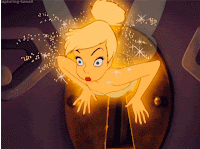 |
| Look at this, Stacie Orrico :) |
 However, regardless of Bell's flawed nature and
However, regardless of Bell's flawed nature and
And to redeem her a little, she ultimately saves Peter from the bomb and helps the pirates
at the end and by bringing the Darlings back home. It's unfortunate
that the film never revolves a closure between Bell and Wendy (while the
cheapquel Peter Pan II Return to NeverLand had Bell and Wendy's daughter Jane actually coming together and Bell actually encouraging Peter to approach Wendy. Which Beaumont didn't return due to changes). However, Kerry cited once that Tinker Bell was not in love with Peter and was rather was his groupie.

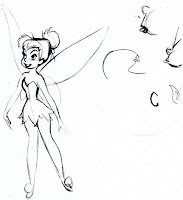 Originally Tinker Bell was going to enthrall the pirates to save Peter and the Lost Boys. But something that animation historians have noticed, is how Tink is remarkably the most proactive of the females of this movie. Of course we should consider Tinker Bell in her former CGI franchise, but we'll take that debate another time. But the Disney Fairies franchise wasn't the only spinoff by Peter Pan, as we've had the Disney Junior show Jake and the NeverLand Pirates.
Originally Tinker Bell was going to enthrall the pirates to save Peter and the Lost Boys. But something that animation historians have noticed, is how Tink is remarkably the most proactive of the females of this movie. Of course we should consider Tinker Bell in her former CGI franchise, but we'll take that debate another time. But the Disney Fairies franchise wasn't the only spinoff by Peter Pan, as we've had the Disney Junior show Jake and the NeverLand Pirates. The Lost Boys, The Native Americans and the Mermaids
 |
| We need a couple rehearsals more :) |
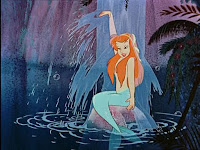 |
| I'm Ariel's grand cousin. Twice removed :) |
It's
also pretty remarkable how NeverLand (an amalgam of several different
areas) is never truly a friendly place. Perhaps it's one of the subtle
indications that growing up is having decency and courtesy (while Barrie
originally called the place Never Never Never Land, Walt shortened it
to it's short basics).
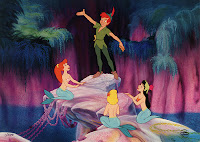
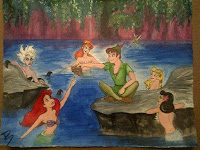 The
only true exceptions would be the Lost Boys (animated by Ward Kimball
and Fred Moore, who also did the mermaids, despite how Moore
unfortunately died during production). Those loud and restless lads, who
may have their hostile moments, but are deep down good at heart.
The
only true exceptions would be the Lost Boys (animated by Ward Kimball
and Fred Moore, who also did the mermaids, despite how Moore
unfortunately died during production). Those loud and restless lads, who
may have their hostile moments, but are deep down good at heart.
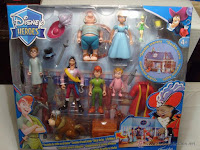
 The pirates are of course the main antagonists of this piece. Even the Ariel-rip offs (yes, note this mandatory sarcasm) are spiteful and
mean to poor Wendy in their short cameo. Originally they were intended
to be longer, but due to screentime, they were reduced (which animation
veteran June Foray modeled for. Tying her legs and them becoming black
and blue, to her dismay).
The pirates are of course the main antagonists of this piece. Even the Ariel-rip offs (yes, note this mandatory sarcasm) are spiteful and
mean to poor Wendy in their short cameo. Originally they were intended
to be longer, but due to screentime, they were reduced (which animation
veteran June Foray modeled for. Tying her legs and them becoming black
and blue, to her dismay).  Modeling for the Mermaids
was also something that Margaret Kerry did, who was a friend of Foray,
who even voiced the strawberry blonde mermaid (because she was doing
such a good job with Tinker Bell and actually worked with Driscoll, whom
she says was the one actor who thought through his lines). Aside from
aforementioned Kerry and Forey, Connie Hilton voiced the mermaids (and yes, this is true folks: Kerry told Jodi Benson that the mermaids were Ariel's great-great grandmother)
Modeling for the Mermaids
was also something that Margaret Kerry did, who was a friend of Foray,
who even voiced the strawberry blonde mermaid (because she was doing
such a good job with Tinker Bell and actually worked with Driscoll, whom
she says was the one actor who thought through his lines). Aside from
aforementioned Kerry and Forey, Connie Hilton voiced the mermaids (and yes, this is true folks: Kerry told Jodi Benson that the mermaids were Ariel's great-great grandmother)
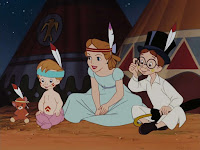
 Originally the movie was going to have Tinker Bell mocking Wendy at
the Mermaids Lagoon. And surfboarding on a baby flying fish. Another
version would have both Wendy and the Lost Boys being transformed to
merpeople and to seek a sunken shipwreck, luring Wendy to her doom.
Originally the movie was going to have Tinker Bell mocking Wendy at
the Mermaids Lagoon. And surfboarding on a baby flying fish. Another
version would have both Wendy and the Lost Boys being transformed to
merpeople and to seek a sunken shipwreck, luring Wendy to her doom.
 Another
version would have the movie open with the mermaids, stressing Tinker
Bell's jealousy (which Walt finally thought would be off-putting to
audiences). The same opening would feature Peter saving the Lost Boys
from the Natives. To their dismay, since it would be nothing for the
boys left to do.
Another
version would have the movie open with the mermaids, stressing Tinker
Bell's jealousy (which Walt finally thought would be off-putting to
audiences). The same opening would feature Peter saving the Lost Boys
from the Natives. To their dismay, since it would be nothing for the
boys left to do.
And
yes, it's impossible to ignore the havoc of the Natives received, made
in an era where Native Americans were actually mocked in Cinema. These
caricatured Red Men are truly a departure from the more noble, realistic
Natives in Pocahontas (their Chief being voiced by Candy Candido from The Wizards of Oz and Sleeping Beauty).
Yet this stereotype existed in Barrie's original play, so it's not
something that Disney should be entirely blamed for (Kerry had
originally recorded for one Indian squaw, but Foray ended up getting
that). The Natives were originally going to protect Peter from the
pirates in an earlier version of the film.

 The
only true exceptions would be the Lost Boys (animated by Ward Kimball
and Fred Moore, who also did the mermaids, despite how Moore
unfortunately died during production). Those loud and restless lads, who
may have their hostile moments, but are deep down good at heart.
The
only true exceptions would be the Lost Boys (animated by Ward Kimball
and Fred Moore, who also did the mermaids, despite how Moore
unfortunately died during production). Those loud and restless lads, who
may have their hostile moments, but are deep down good at heart. 
 The pirates are of course the main antagonists of this piece. Even the Ariel-rip offs (yes, note this mandatory sarcasm) are spiteful and
mean to poor Wendy in their short cameo. Originally they were intended
to be longer, but due to screentime, they were reduced (which animation
veteran June Foray modeled for. Tying her legs and them becoming black
and blue, to her dismay).
The pirates are of course the main antagonists of this piece. Even the Ariel-rip offs (yes, note this mandatory sarcasm) are spiteful and
mean to poor Wendy in their short cameo. Originally they were intended
to be longer, but due to screentime, they were reduced (which animation
veteran June Foray modeled for. Tying her legs and them becoming black
and blue, to her dismay).  Modeling for the Mermaids
was also something that Margaret Kerry did, who was a friend of Foray,
who even voiced the strawberry blonde mermaid (because she was doing
such a good job with Tinker Bell and actually worked with Driscoll, whom
she says was the one actor who thought through his lines). Aside from
aforementioned Kerry and Forey, Connie Hilton voiced the mermaids (and yes, this is true folks: Kerry told Jodi Benson that the mermaids were Ariel's great-great grandmother)
Modeling for the Mermaids
was also something that Margaret Kerry did, who was a friend of Foray,
who even voiced the strawberry blonde mermaid (because she was doing
such a good job with Tinker Bell and actually worked with Driscoll, whom
she says was the one actor who thought through his lines). Aside from
aforementioned Kerry and Forey, Connie Hilton voiced the mermaids (and yes, this is true folks: Kerry told Jodi Benson that the mermaids were Ariel's great-great grandmother) 
 Originally the movie was going to have Tinker Bell mocking Wendy at
the Mermaids Lagoon. And surfboarding on a baby flying fish. Another
version would have both Wendy and the Lost Boys being transformed to
merpeople and to seek a sunken shipwreck, luring Wendy to her doom.
Originally the movie was going to have Tinker Bell mocking Wendy at
the Mermaids Lagoon. And surfboarding on a baby flying fish. Another
version would have both Wendy and the Lost Boys being transformed to
merpeople and to seek a sunken shipwreck, luring Wendy to her doom.  Another
version would have the movie open with the mermaids, stressing Tinker
Bell's jealousy (which Walt finally thought would be off-putting to
audiences). The same opening would feature Peter saving the Lost Boys
from the Natives. To their dismay, since it would be nothing for the
boys left to do.
Another
version would have the movie open with the mermaids, stressing Tinker
Bell's jealousy (which Walt finally thought would be off-putting to
audiences). The same opening would feature Peter saving the Lost Boys
from the Natives. To their dismay, since it would be nothing for the
boys left to do.
And
sure, last, but not least the Natives (also animated by Kimball, who
enjoyed that assignment better) are crucial characters to Never Land.
And while they come across as hostile initially, they turn around after
the saving of Tiger Lily (but their hostility is understandable).
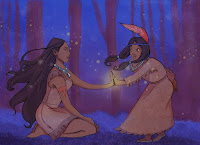 |
| This is how you compare hands, Tarzan and Jane :) |
Trivia
 |
| Don't blame our crazy party, it could've been worse :) It could've been drugs and rock'n roll ;) |
 It's needless to say that Walt started the 1950 with a bang! He released three movies through three years at the beginning of the decade. The second World War had hampered the development of Cinderella and Alice in Wonderland as well. So they got a full production greenlit when the war was over. While Walt was originally planning Peter Pan
for a 1948 release, the final production on the film began in 1949,
while the final screenplay was settled in 1950. Then it was scheduled
for a 1951 release and afterwards a Christmas 1952 release. Roy O.
Disney was against Pan, since he had his hesitations about it's appeal.
It's needless to say that Walt started the 1950 with a bang! He released three movies through three years at the beginning of the decade. The second World War had hampered the development of Cinderella and Alice in Wonderland as well. So they got a full production greenlit when the war was over. While Walt was originally planning Peter Pan
for a 1948 release, the final production on the film began in 1949,
while the final screenplay was settled in 1950. Then it was scheduled
for a 1951 release and afterwards a Christmas 1952 release. Roy O.
Disney was against Pan, since he had his hesitations about it's appeal. 
 Peter Pan, Alice and Cinderella featured even more crisper and polished animation than Walt's earliest films. Yet I personally thought that Lady and the Tramp's style was more akin to Walt's first five films.
Peter Pan, Alice and Cinderella featured even more crisper and polished animation than Walt's earliest films. Yet I personally thought that Lady and the Tramp's style was more akin to Walt's first five films. |
| This will be a new trend from now on ;) Swan-skating ;) |
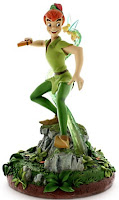 Walt's first films are known for how their cuteness
was equally balanced with harrowing and sappy moments, alongside with
pathos. And while the latter elements are present in his movies from the
early 50`s, they still felt somewhat lighter in tone.
Walt's first films are known for how their cuteness
was equally balanced with harrowing and sappy moments, alongside with
pathos. And while the latter elements are present in his movies from the
early 50`s, they still felt somewhat lighter in tone. 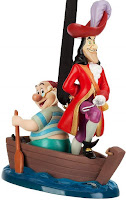
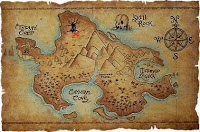 Creating sheer magic was a challenge for the crew. Barrie's notes about character descriptions
were more helpful to the crew than the actual dialogue and scene
descriptions (which Walt managed to get). Walt released the promotional The Peter Pan Story
during it's release. Yet a compliment Walt really liked was from some
random female Londoners about that the movie's splendid quality would
overshadow how Americanized the movie was.
Creating sheer magic was a challenge for the crew. Barrie's notes about character descriptions
were more helpful to the crew than the actual dialogue and scene
descriptions (which Walt managed to get). Walt released the promotional The Peter Pan Story
during it's release. Yet a compliment Walt really liked was from some
random female Londoners about that the movie's splendid quality would
overshadow how Americanized the movie was.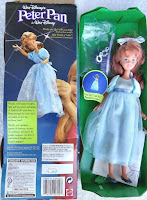

 And also showing his escape from his own mother and being replaced with another baby (not so different from Lotso's story in Toy Story 3).
Originally
Peter was also going to invite his friends to an imaginary dinner. And
one story idea (by Joe Grant) would have Peter being raised by the
fairies. With Tinker Bell being the Queen and giving him the power to
fly (a power not given to everyone). And honestly, I think it's a pity
that these ideas were deleted, since I think several of them could've
serve the movie well.
And also showing his escape from his own mother and being replaced with another baby (not so different from Lotso's story in Toy Story 3).
Originally
Peter was also going to invite his friends to an imaginary dinner. And
one story idea (by Joe Grant) would have Peter being raised by the
fairies. With Tinker Bell being the Queen and giving him the power to
fly (a power not given to everyone). And honestly, I think it's a pity
that these ideas were deleted, since I think several of them could've
serve the movie well. Pan was also the very last film where all the
members of the Nine Old Men worked together as Directing Animators. The
Disney version contains lines from the play itself. The studio prepared
a radio version of the film to be broadcast in Korea and China, With
original songs and dialogue to be dubbed into each countries languages.
Lux Radio Theatre broadcasted a version of the film in December 1953,
featuring the actors. Bill Peet was sent to work on Peter Pan
commercials. And the original live action reference was actually deleted
after the animation was completed (yes, it's true, folks).

 Walt even went to see the original statue of Pan himself in KensingtonGardens,
London. The Ink and Paint Department completed twenty four fully inked
and painted cells for each second of the final film.
Walt even went to see the original statue of Pan himself in KensingtonGardens,
London. The Ink and Paint Department completed twenty four fully inked
and painted cells for each second of the final film. With many sequences or characters requiring multiple layers of cells. For sake of consistency, each artist worked on eight to ten cells at a time. Overall, 250,000 completed cells was finished. Marc Davis also animated Mrs Darling as well.
Kathryn Beaumount had of course also starred in Alice in Wonderland
previously. Who despite having her credit on her former movie, had to
compete with more girls for the part of Wendy. And she still voiced
Wendy later on. Beaumount cites that Walt was easy to be around. And she
did the live action reference, yet she had to face her fear of flying.
Though Peter's live action reference, then 24-year old Roland Dupree,
calmed her down.

 |
| It's not gold, it's lit by the moonlight shadow :) |
The Villain
A thing both Alice and Pan
have in common are comical villains (something that Walt suggested with
Captain Hook). Villains that could be fearsome and scary, but also who
were equally balanced with their comedic sides. Which was somewhat a
departure from Walt's first villains, as they had their funny parts mostly reduced.
The villain of this piece, Captain Hook, is one of Walt's most beloved and heralded villains. And deservedly so (it's remarkable how Mother Gothel visually resembles him).
But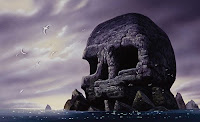
 perhaps the irony is with the story is that for once the villain has
been legitimately harassed by the hero. And actually has a good
reason for revenge (yet in Disney's version, Hook has lost his left
hand, as opposed to the play). Walt suggested that Frank Thomas would animate him, because of his way of handling villains. While Thomas` first scenes with Hook never received praise and he
was dissatisfied of his work on Hook. And while he had his hesitations
about the first test, Walt actually happened to like it. Yet the design
for Hook was a struggle, since the director wanted him to look as Ernest
Torrence.
The story guys saw him as a fop, yet Walt suggested both
approaches! Woolie Reitherman also took some fighting and comedy scenes,
which that he enjoyed. Since he waas into those things. Hook has made cameos in other properties. As in Walt Disney Anthology Series, The Mouse Factory and Raw Toonage.
perhaps the irony is with the story is that for once the villain has
been legitimately harassed by the hero. And actually has a good
reason for revenge (yet in Disney's version, Hook has lost his left
hand, as opposed to the play). Walt suggested that Frank Thomas would animate him, because of his way of handling villains. While Thomas` first scenes with Hook never received praise and he
was dissatisfied of his work on Hook. And while he had his hesitations
about the first test, Walt actually happened to like it. Yet the design
for Hook was a struggle, since the director wanted him to look as Ernest
Torrence.
The story guys saw him as a fop, yet Walt suggested both
approaches! Woolie Reitherman also took some fighting and comedy scenes,
which that he enjoyed. Since he waas into those things. Hook has made cameos in other properties. As in Walt Disney Anthology Series, The Mouse Factory and Raw Toonage.
The villain of this piece, Captain Hook, is one of Walt's most beloved and heralded villains. And deservedly so (it's remarkable how Mother Gothel visually resembles him).
But

 perhaps the irony is with the story is that for once the villain has
been legitimately harassed by the hero. And actually has a good
reason for revenge (yet in Disney's version, Hook has lost his left
hand, as opposed to the play). Walt suggested that Frank Thomas would animate him, because of his way of handling villains. While Thomas` first scenes with Hook never received praise and he
was dissatisfied of his work on Hook. And while he had his hesitations
about the first test, Walt actually happened to like it. Yet the design
for Hook was a struggle, since the director wanted him to look as Ernest
Torrence.
The story guys saw him as a fop, yet Walt suggested both
approaches! Woolie Reitherman also took some fighting and comedy scenes,
which that he enjoyed. Since he waas into those things. Hook has made cameos in other properties. As in Walt Disney Anthology Series, The Mouse Factory and Raw Toonage.
perhaps the irony is with the story is that for once the villain has
been legitimately harassed by the hero. And actually has a good
reason for revenge (yet in Disney's version, Hook has lost his left
hand, as opposed to the play). Walt suggested that Frank Thomas would animate him, because of his way of handling villains. While Thomas` first scenes with Hook never received praise and he
was dissatisfied of his work on Hook. And while he had his hesitations
about the first test, Walt actually happened to like it. Yet the design
for Hook was a struggle, since the director wanted him to look as Ernest
Torrence.
The story guys saw him as a fop, yet Walt suggested both
approaches! Woolie Reitherman also took some fighting and comedy scenes,
which that he enjoyed. Since he waas into those things. Hook has made cameos in other properties. As in Walt Disney Anthology Series, The Mouse Factory and Raw Toonage.
The Rest of the Characters
 |
| Just as you know, we're just playing ;) |
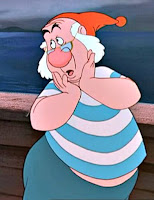 As for the other characters in Peter Pan, they`re allowed to shine as well. As Wendy's younger brothers, the geeky John (who originally was going to stay in London because he was too serious) and the endearing Michael.
As for the other characters in Peter Pan, they`re allowed to shine as well. As Wendy's younger brothers, the geeky John (who originally was going to stay in London because he was too serious) and the endearing Michael. Nana also manages to get sympathy through her brief screentime (and she was originally supposed to travel with the kids to Neverland and going to narrate the story. And being the only one who saw the cloud ship at the end).
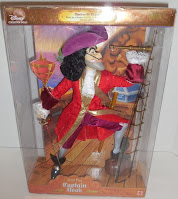
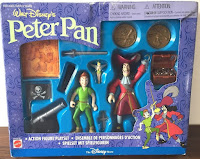 The Lost boys also dominates in their screentime (and originally they were
The Lost boys also dominates in their screentime (and originally they weregoing to travel with the Darlings to London and when Peter refused, Wendy would give him an honest lecture). But so does Mr. Smee, the ditzy and dense, yet endearing sidekick of Hook (who looks like he could've been a relative of the Seven Dwarfs, which he was modeled after). Smee was voiced by radio host Bill Thompson, who had voiced other Disney characters priorly and Droopy. And animated by Ollie Johnston, (who almost served as a self portrait). Animation historian John Grant claims Walt's Smee to be the definite version of the character. And let's not forget the clock-ticking crocodile who's always after our villain (animated by Woolie Reitherman, who originally was going to kill Hook).
Music
 |
| I'm cute while I'm hungry, ain't I? :) |
 |
| It makes me look like an angel :) |
immortalized in Disney's From All of Us to All of You Christmas showings) and Following The Leader. The other songs aren`t completely neglected, but still given less attention. There's no secret that one famous song, Never Smile At A Crocodile, is only a musical cue in the score and is never sung (while Jerry Lewis made a cover). But what's remarkable is that Peter Pan never gets to sing himself!

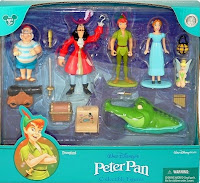 Made
by Walt's music veterans Oliver Wallace, Sammy Fain and Frank
Churchill, the choir was conducted by Jud Conlon and his Rhythmaires.
Who used to work for Bing Crosby at the 40`s and 50`s. However, later
on, Richard Sherman was given an earlier treatment for a song from 1939.
Which he expanded to a song called Never Land, sung by Paige O'Hara (Belle in Beauty and the Beast).
Made
by Walt's music veterans Oliver Wallace, Sammy Fain and Frank
Churchill, the choir was conducted by Jud Conlon and his Rhythmaires.
Who used to work for Bing Crosby at the 40`s and 50`s. However, later
on, Richard Sherman was given an earlier treatment for a song from 1939.
Which he expanded to a song called Never Land, sung by Paige O'Hara (Belle in Beauty and the Beast).
Epilogue
 Overall, Peter Pan
is a cherished entry to Disney's second Golden Age. And a important film
to Disney's huge legacy. While it's not one of my all time
favorites and has a couple of flaws that it's hampered by (some
moments of the story drags. several of the characters remains
underdeveloped: As out title lead, Tinker Bell and The Lost Boys. And
the comedy may be a little blatant and off-putting at times), it's still
an enchanting and captivating film that I still enjoy watching to this
day. As with most Disney, it evokes the feeling of childhood nostalgia,
but Pan maintains captivating regardless. This entry was
originally written to honor it's 65th Anniversary. So Happy Belated 65th Anniversary and may you go on to have many more!
Overall, Peter Pan
is a cherished entry to Disney's second Golden Age. And a important film
to Disney's huge legacy. While it's not one of my all time
favorites and has a couple of flaws that it's hampered by (some
moments of the story drags. several of the characters remains
underdeveloped: As out title lead, Tinker Bell and The Lost Boys. And
the comedy may be a little blatant and off-putting at times), it's still
an enchanting and captivating film that I still enjoy watching to this
day. As with most Disney, it evokes the feeling of childhood nostalgia,
but Pan maintains captivating regardless. This entry was
originally written to honor it's 65th Anniversary. So Happy Belated 65th Anniversary and may you go on to have many more! |
| I know I look like a Charlie McCarthy doll ;) But I'm more handsome :) |
Fly to my updates on https://www.facebook.com/profile.php?id=100035703494050 and https://twitter.com/NerdyLunada.
References:
Peter Pan Diamond Edition
Tinker Bell An Evolution (Mindy Johnson)
Tinker Bell An Evolution (Mindy Johnson)
Mouse Under Glass (David Koenig)
The Art of Walt Disney: From Mickey Mouse to the Magic Kingdoms and Beyond (Christopher Finch)
Disney's Art of Animation: From Mickey Mouse to Hercules (Bob Thomas)
Walt Disney The Art of Animation (1958 Edition, Bob Thomas)
https://en.wikipedia.org/wiki/J._M._Barrie
https://en.wikipedia.org/wiki/Peter_Pan_(1953_film)
https://catalog.afi.com/Catalog/moviedetails/50973
Walt Disney The Art of Animation (1958 Edition, Bob Thomas)
https://en.wikipedia.org/wiki/J._M._Barrie
https://en.wikipedia.org/wiki/Peter_Pan_(1953_film)
https://catalog.afi.com/Catalog/moviedetails/50973
http://www.biography.com/people/jm-barrie-9200058#early-literary-work
https://web.archive.org/web/20110822155433/
http://www.festival-cannes.com/en/archives/ficheFilm/id/3894/year/1953.html
https://web.archive.org/web/20110822155433/
http://www.festival-cannes.com/en/archives/ficheFilm/id/3894/year/1953.html
http://animatedviews.com/2012/41233/
http://www.kathrynbeaumont.com/
http://www.tinkerbelltalks.com/tinker-bell-talks-tales-of-a-pixie-dusted-life
https://www.amazon.com/Tinker-Bell-Talks-Margaret-Kerry/dp/1533500754#reader_1533500754
http://www.boxofficemojo.com/movies/?id=peterpan.htm
https://books.google.no/books?id=5JHrODsAdNwC&printsec=frontcover&hl=no&source=gbs_ge_summary_r&cad=0#v=onepage&q=Peter%20Pan&f=false
https://books.google.no/books?id=zjeqFCPpE3gC&printsec=frontcover&hl=no&source=gbs_ge_summary_r&cad=0#v=onepage&q=Peter%20Pan&f=false
https://www.amazon.com/Walt-Disney-American-Original-Editions/dp/0786860278?ref_=nav_ya_signin&#reader_0786860278
http://www.michaelbarrier.com/Interviews/Kinney1976/Kinney1976.html
http://www.tcm.com/tcmdb/title/86554/Peter-Pan/notes.html
http://www.seventeen.com/celebrity/a11636/margaret-kerry/
https://books.google.no/books?id=zOzpwaDTR2wC&pg=PA182&lpg=PA182&dq=connie+hilton+peter+pan&source=bl&ots=1HLwFBqayo&sig=FacDzf5OYGv4AvmS3thzij-r_SQ&hl=en&sa=X&redir_esc=y#v=onepage&q=connie%20hilton%20peter%20pan&f=false
https://accessreel.com/article/roland-dupree-peter-pan/
https://books.google.no/books?id=PNkE0c78qYQC&pg=PA79&lpg=PA79&dq=hans+conried+captain+hook&source=bl&ots=MQeOOZH-Qc&sig=_8o7tZDL3OZTwXrPc7KkxnUWd3o&hl=en&sa=X&redir_esc=y#v=onepage&q=hans%20conried%20captain%20hook&f=false
https://www.youtube.com/watch?v=fPWm-cgTcf4
https://books.google.no/books?id=zDJXnzMh7bkC&printsec=frontcover&hl=no&source=gbs_ge_summary_r&cad=0#v=onepage&q=Peter%20Pan&f=false
https://www.amazon.com/Walt-Disneys-Nine-Old-Animation/dp/0786864966?ref_=nav_ya_signin&#reader_0786864966
https://books.google.no/books?id=oGckDwAAQBAJ&pg=PT180&lpg=PT180&dq=frank+churchill+peter+pan&source=bl&ots=0zhtfImiCn&sig=coet1PQnVDYWfFR58u-KmlJrv-Q&hl=en&sa=X&redir_esc=y#v=onepage&q=frank%20churchill%20peter%20pan&f=false
https://www.aol.com/2013/02/13/cinemark-announces-the-return-of-favorite-disney-c/
https://www.thefreelibrary.com/Disney+to+Debut+Nine+Classic+Animated+Titles+on+DVD+for+a+Limited...-a055479044
http://articles.latimes.com/2002/feb/15/entertainment/et-king15
http://www.nytimes.com/movie/review?res=940CE3DF1F3AE23BBC4A52DFB4668388649EDE
https://en.wikipedia.org/wiki/Jake_and_the_Never_Land_Pirates
https://en.wikipedia.org/wiki/Margaret_Kerry#Work_with_Disney
https://variety.com/1952/film/reviews/peter-pan-4-1200417441/'
https://www.youtube.com/watch?v=Di9tYGToHR0
https://www.ocregister.com/2011/01/17/margaret-kerry-was-disneys-tinker-bell/
https://www.youtube.com/watch?v=2RJIrDoLKDc
http://www.latimes.com/socal/glendale-news-press/news/tn-gnp-me-tinkerbell-20160805-story.html
https://parade.com/508018/dianareese/tinker-bell-talks-what-you-dont-know-about-margaret-kerry/
https://www.snopes.com/disney/films/tinkerbell.asp
https://www.nbcchicago.com/entertainment/entertainment-news/Meet-Margaret-Kerry-The-Woman-Who-Gave-Tinker-Bell-Wings-189451441.html
https://mediamikes.com/2013/02/margaret-kerry-reflects-on-modeling-for-tinker-bell-in-disneys-peter-pan/
http://disney.wikia.com/wiki/Margaret_Kerry
https://www.youtube.com/watch?v=o0Ce_EhSOMI
https://www.youtube.com/watch?v=PiVcb9pzf5g
https://www.youtube.com/watch?v=e9AwUHbrY6A
https://www.youtube.com/watch?v=osV_SPm7_aE
https://www.youtube.com/watch?v=GFngFjfD0OI
http://www.kathrynbeaumont.com/
http://www.tinkerbelltalks.com/tinker-bell-talks-tales-of-a-pixie-dusted-life
https://www.amazon.com/Tinker-Bell-Talks-Margaret-Kerry/dp/1533500754#reader_1533500754
http://www.boxofficemojo.com/movies/?id=peterpan.htm
https://books.google.no/books?id=5JHrODsAdNwC&printsec=frontcover&hl=no&source=gbs_ge_summary_r&cad=0#v=onepage&q=Peter%20Pan&f=false
https://books.google.no/books?id=zjeqFCPpE3gC&printsec=frontcover&hl=no&source=gbs_ge_summary_r&cad=0#v=onepage&q=Peter%20Pan&f=false
https://www.amazon.com/Walt-Disney-American-Original-Editions/dp/0786860278?ref_=nav_ya_signin&#reader_0786860278
http://www.michaelbarrier.com/Interviews/Kinney1976/Kinney1976.html
http://www.tcm.com/tcmdb/title/86554/Peter-Pan/notes.html
http://www.seventeen.com/celebrity/a11636/margaret-kerry/
https://books.google.no/books?id=zOzpwaDTR2wC&pg=PA182&lpg=PA182&dq=connie+hilton+peter+pan&source=bl&ots=1HLwFBqayo&sig=FacDzf5OYGv4AvmS3thzij-r_SQ&hl=en&sa=X&redir_esc=y#v=onepage&q=connie%20hilton%20peter%20pan&f=false
https://accessreel.com/article/roland-dupree-peter-pan/
https://books.google.no/books?id=PNkE0c78qYQC&pg=PA79&lpg=PA79&dq=hans+conried+captain+hook&source=bl&ots=MQeOOZH-Qc&sig=_8o7tZDL3OZTwXrPc7KkxnUWd3o&hl=en&sa=X&redir_esc=y#v=onepage&q=hans%20conried%20captain%20hook&f=false
https://www.youtube.com/watch?v=fPWm-cgTcf4
https://books.google.no/books?id=zDJXnzMh7bkC&printsec=frontcover&hl=no&source=gbs_ge_summary_r&cad=0#v=onepage&q=Peter%20Pan&f=false
https://www.amazon.com/Walt-Disneys-Nine-Old-Animation/dp/0786864966?ref_=nav_ya_signin&#reader_0786864966
https://books.google.no/books?id=oGckDwAAQBAJ&pg=PT180&lpg=PT180&dq=frank+churchill+peter+pan&source=bl&ots=0zhtfImiCn&sig=coet1PQnVDYWfFR58u-KmlJrv-Q&hl=en&sa=X&redir_esc=y#v=onepage&q=frank%20churchill%20peter%20pan&f=false
https://www.aol.com/2013/02/13/cinemark-announces-the-return-of-favorite-disney-c/
https://www.thefreelibrary.com/Disney+to+Debut+Nine+Classic+Animated+Titles+on+DVD+for+a+Limited...-a055479044
http://articles.latimes.com/2002/feb/15/entertainment/et-king15
http://www.nytimes.com/movie/review?res=940CE3DF1F3AE23BBC4A52DFB4668388649EDE
https://en.wikipedia.org/wiki/Jake_and_the_Never_Land_Pirates
https://en.wikipedia.org/wiki/Margaret_Kerry#Work_with_Disney
https://variety.com/1952/film/reviews/peter-pan-4-1200417441/'
https://www.youtube.com/watch?v=Di9tYGToHR0
https://www.ocregister.com/2011/01/17/margaret-kerry-was-disneys-tinker-bell/
https://www.youtube.com/watch?v=2RJIrDoLKDc
http://www.latimes.com/socal/glendale-news-press/news/tn-gnp-me-tinkerbell-20160805-story.html
https://parade.com/508018/dianareese/tinker-bell-talks-what-you-dont-know-about-margaret-kerry/
https://www.snopes.com/disney/films/tinkerbell.asp
https://www.nbcchicago.com/entertainment/entertainment-news/Meet-Margaret-Kerry-The-Woman-Who-Gave-Tinker-Bell-Wings-189451441.html
https://mediamikes.com/2013/02/margaret-kerry-reflects-on-modeling-for-tinker-bell-in-disneys-peter-pan/
http://disney.wikia.com/wiki/Margaret_Kerry
https://www.youtube.com/watch?v=o0Ce_EhSOMI
https://www.youtube.com/watch?v=PiVcb9pzf5g
https://www.youtube.com/watch?v=e9AwUHbrY6A
https://www.youtube.com/watch?v=osV_SPm7_aE
https://www.youtube.com/watch?v=GFngFjfD0OI


